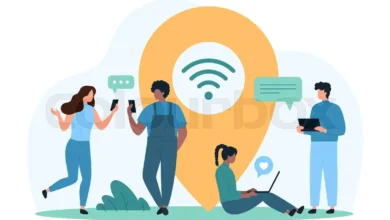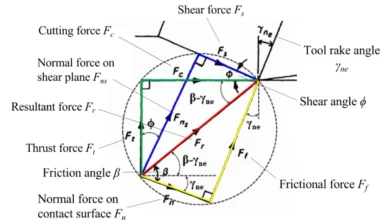Everything You Need to Know About Etrues Ports Codes

Etrues Ports Codes The world of technology and digital communication is vast and constantly evolving. One of the fundamental components that drive this ever-changing landscape is the infrastructure behind the systems we rely on. Among these vital elements, etrues ports codes have emerged as an important part of ensuring smooth and efficient connectivity, especially when it comes to secure online communications, data transfer, and the functioning of various web-based services. In this article, we will dive deep into what etrues ports codes are, how they work, and their significance in the digital age.
Before we get into the technical aspects, it’s important to establish why etrues ports codes are relevant. They play a critical role in defining specific ports used for different types of communication. Think of them as the “addresses” for data to travel between different applications, servers, and devices on the internet. Without these codes, it would be impossible to send data to the correct destination, resulting in broken connections and disrupted services. Now, let’s explore the topic in greater detail.
What Are Etrues Ports Codes?
Etrues ports codes are a standardized system of numerical identifiers used to define communication ports across different digital protocols. When a device or application communicates over the internet, it needs a way to send and receive data to and from a particular location. Each data channel, or port, is associated with a unique number, ensuring that the data gets to the correct destination.
These codes essentially act as gatekeepers in the realm of digital communication. They help manage and organize the traffic that flows through the digital world, directing packets of data to the correct applications and services. The significance of these codes cannot be overstated because they ensure that the right information is sent to the right place, minimizing errors and ensuring smooth interactions online.
The Functionality Behind Etrues Ports Codes
When we send a message or request data from a server, it is routed through specific ports based on the type of service being requested. For instance, when you’re browsing the web, your request is sent through port 80, the default port for HTTP communication. Similarly, if you’re sending an email, your request may go through port 25 or port 465, depending on the email protocol being used.
Etrues ports codes are not just random numbers; they are assigned according to well-defined standards. The Internet Assigned Numbers Authority (IANA) maintains these standards and assigns each port number to a specific function. For example, ports 1 through 1023 are considered well-known ports, and they are reserved for specific protocols like HTTP, FTP, and SMTP. Ports above 1023 are considered dynamic or private ports and are used for temporary communication channels between applications.
The Role of Etrues Ports Codes in Modern Communication Systems
In modern communication systems, the importance of these ports is amplified due to the growing reliance on web-based applications, cloud services, and real-time communication. Without proper management of port codes, services could easily experience delays, errors, or even security breaches. Etrues ports codes help prevent such issues by providing a reliable and standardized way to route communication between different devices and services.
Application in Web Security
In the context of web security, ports play a significant role in ensuring safe connections. For instance, when you visit a website using HTTPS (Hypertext Transfer Protocol Secure), the communication is sent through port 443, a secure port that encrypts data to protect it from malicious interception. This is just one example of how port numbers influence the security and integrity of our online interactions.
Moreover, understanding how ports work is essential for businesses and individuals who want to secure their systems from cyberattacks. Port scanning, for instance, is a technique often used by hackers to identify open ports that can be exploited. By understanding the various port codes and ensuring that unnecessary ports are closed or secured, you can mitigate these risks and maintain a safe online environment.
Etrues Ports Codes in Cloud Computing
Cloud computing has revolutionized the way businesses and individuals access computing resources, and etrues ports codes are critical in this space. When interacting with cloud services, various ports are used for different purposes—some for secure data transfer, others for authentication, and others for management tasks. Knowing the correct port numbers for different services allows users to configure their systems and networks properly, ensuring seamless and secure access to cloud platforms.
Many cloud services also rely on port forwarding, a technique that allows external devices to connect to specific devices or services within a private network. By using the right etrues ports codes, cloud administrators can set up efficient and secure communication channels, avoiding unnecessary exposure to potential vulnerabilities.
The Different Types of Etrues Ports Codes
Etrues ports codes come in several categories, each serving a unique purpose in the digital ecosystem. Here’s a breakdown of the different types:
Well-Known Ports (0-1023)
These ports are used by the most common and widely recognized protocols. For instance, port 80 is used for HTTP communication, while port 443 is used for HTTPS. Other common well-known ports include port 21 for FTP (File Transfer Protocol) and port 25 for SMTP (Simple Mail Transfer Protocol).
Registered Ports (1024-49151)
Registered ports are used by applications that are not as widely known as the ones in the well-known category but still require dedicated ports for communication. These ports are assigned by the IANA and are used for specific services that may not be as ubiquitous as HTTP or FTP but still need a fixed port for proper communication.
Dynamic or Private Ports (49152-65535)
These ports are used by client applications when connecting to servers. They are not assigned to any specific protocol and are used dynamically by operating systems for outbound connections. These ports help ensure that applications don’t conflict with each other by allowing temporary ports for their communication needs.
The Future of Etrues Ports Codes
As the world continues to evolve digitally, the need for effective port management will only grow. With the advent of new technologies such as 5G, Internet of Things (IoT), and more sophisticated cloud platforms, the demand for efficient and secure communication channels will increase. This will likely result in more etrues ports codes being assigned to newer services and protocols.
Furthermore, with the rise of encryption technologies and privacy concerns, there may be a stronger emphasis on secure ports for communication. Organizations will need to stay ahead of these trends by continually adapting their networks and systems to the evolving landscape of digital communication.
Conclusion
Etrues ports codes play a fundamental role in shaping how data flows through the digital world. From ensuring secure connections to providing unique channels for communication, these codes are integral to the functionality of everything we do online. Understanding how these ports work and their significance can help you navigate the complexities of the digital age more effectively. Whether you’re managing a network, developing an application, or simply using the internet, etrues ports codes are the unsung heroes that ensure your data travels securely and efficiently.





